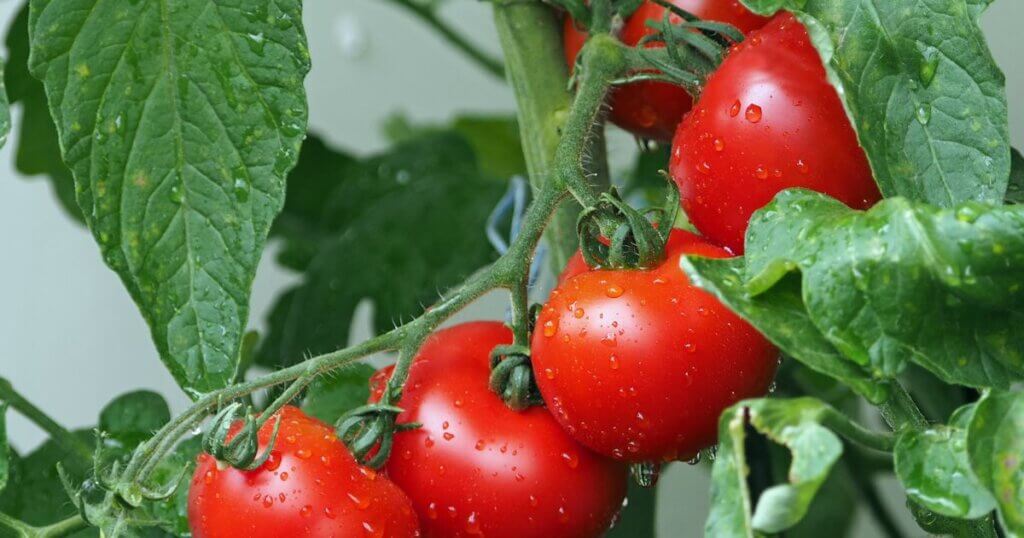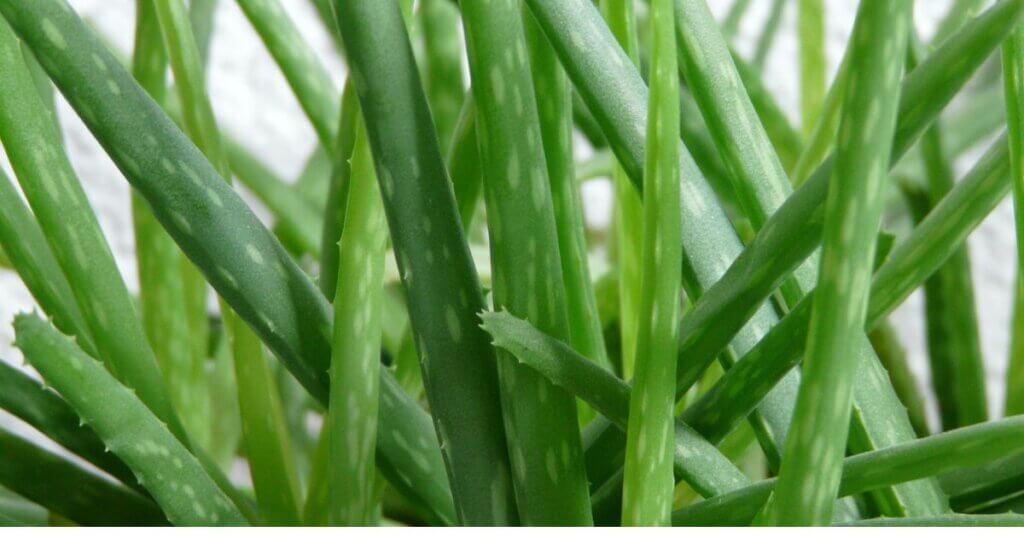The Ultimate Guide to Growing Deep Water Culture Tomatoes for Thriving Yields

Indoor Farming Hub is an Amazon Associate and earns from qualifying purchases.
In this article, we’ll dive into everything you need to know about Deep Water Culture Tomatoes —from setup to harvest. Let’s get started!
Table of Contents
What Is Deep Water Culture (DWC)?
Deep Water Culture (DWC) is a hydroponic growing method where plant roots are suspended directly in a nutrient-rich, oxygenated water solution. Instead of relying on soil, plants absorb everything they need directly from the water, leading to faster and more efficient growth. You can think of it like giving your plants a continuous supply of a perfectly blended smoothie packed with nutrients and oxygen. This simple yet powerful setup makes it easy to grow strong, healthy plants with accelerated development and impressive yields.
Why Grow Tomatoes Using Deep Water Culture?
Growing tomatoes using Deep Water Culture offers numerous advantages, including rapid growth, larger harvests, and enhanced flavor. Since you have complete control over the nutrient levels, oxygen supply, and environmental conditions, it’s easier to fine-tune everything for optimal plant performance. This precision reduces common problems like soil-borne diseases and nutrient imbalances, helping your tomatoes thrive. If you’re aiming for abundant, flavorful tomatoes with consistent quality, DWC is one of the best growing methods you can choose.
Benefits of Deep Water Culture Tomatoes
Tomatoes grow faster in DWC because nutrients are immediately accessible to roots. Expect higher yields and cleaner, pest-free crops compared to soil growing. DWC also uses water efficiently by recycling it within the system. Overall, it’s an eco-friendly, high-reward way to grow tomatoes.
Challenges of Growing Tomatoes in Deep Water Culture
DWC has a learning curve that beginners must tackle carefully. Without proper aeration, roots can suffer from rot. Tomatoes demand balanced nutrients, and imbalances can quickly affect growth. While setup costs can be high, the investment pays off with bigger and better harvests.
Setting Up a Deep Water Culture System for Tomatoes
A strong DWC system setup is essential for success. You’ll need a sturdy reservoir, air pump with stones, net pots, and a growing medium like hydroton. Larger systems may also use a water pump for better circulation. Building a stable foundation ensures healthier plants and bigger yields.
Hydroton clay pebbles are the ideal growing medium for supporting tomato roots in DWC. They provide excellent aeration, maintain moisture without waterlogging, and are reusable season after season.
Essential Equipment for DWC Tomato Growing
Use deep, sturdy containers like 5-gallon buckets to support large tomato plants. Install an air pump and air stones to oxygenate the water properly. Place seedlings in net pots filled with a stable growing medium like clay pebbles. Larger systems may also benefit from a water pump for nutrient circulation.
A reliable air pump is crucial for oxygenating the water to prevent root rot. The VIVOSUN pump includes multiple outlets and adjustable airflow, perfect for keeping your tomatoes healthy in DWC. It also comes with durable air stones for consistent oxygen bubbles.
Choosing the Right Containers for Tomatoes
Tomatoes need deep, spacious containers to support their size and root development in DWC. Choose durable, food-safe, light-proof buckets to prevent contamination and algae growth. Containers should have wide bases or external supports like trellises to stabilize the plant. Also, include drainage holes and tubing access for aeration and maintenance.
Durable, food-safe 5-gallon buckets are a must for tomato DWC systems. Hydrofarm’s heavy-duty buckets resist light penetration (which prevents algae growth) and are designed for hydroponic use, making them a perfect pick for your system.
Nutrient Solution Basics for DWC Tomatoes
Tomatoes are heavy feeders needing balanced nitrogen (N), phosphorus (P), and potassium (K) for optimal growth. Start with a 3-2-4 ratio in the vegetative stage, then shift to 2-4-6 for flowering and fruiting. Essential micronutrients like calcium and magnesium are crucial to prevent issues like blossom end rot. Keep pH between 5.5–6.5 and EC between 2.0–2.5 for healthy plants.
Selecting the Best Tomato Varieties for Deep Water Culture
Not all tomatoes thrive equally in DWC, so choosing the right variety is important. Compact types like ‘Sungold’ or ‘Sweet 100’ are great for beginners and small spaces. Beefsteak varieties like ‘Big Beef’ need stronger supports but reward you with larger fruits. Roma tomatoes are also excellent for DWC because of their steady and manageable growth.
Determinate vs. Indeterminate Tomatoes: Which Is Better for DWC?
Determinate tomatoes grow to a fixed height and produce a single large harvest, ideal for smaller DWC systems. Indeterminate varieties grow continuously and produce fruit over a longer period but need more maintenance. Choose determinate types like ‘Bush Early Girl’ if you want quick, compact harvests. For longer, larger yields, go with indeterminate types like ‘Better Boy’ or ‘Sungold’.
Preparing Tomato Seeds for DWC
Start with high-quality seeds soaked in warm water for 6–8 hours to promote quick germination. Place seeds in a damp paper towel inside a plastic bag and store them in a warm, dark spot. After sprouting, transfer them into hydroponic starter plugs like Rockwool. Healthy, strong seedlings are critical for DWC success.
Transplanting Tomato Seedlings into a DWC System
Transplant seedlings into net pots filled with hydroton once they have strong root systems. Position the roots so they can easily reach the nutrient solution in the reservoir. Keep the water level slightly higher for young plants to encourage deeper root growth. Make sure the stem stays dry and well-supported to prevent rot.
Maintaining Optimal Conditions for DWC Tomatoes
Maintain a pH of 5.5–6.5 and monitor nutrient strength with an EC meter. Keep EC around 1.5–2.0 in the vegetative stage and increase to 2.0–2.5 during fruiting. Watch for yellowing leaves or stunted growth as signs of imbalance. Regular adjustments ensure steady, healthy tomato development.
Managing Light Requirements for Tomato Growth
Tomatoes love light, so use full-spectrum LED grow lights for 12–16 hours daily during the vegetative stage. Reduce light to 10–12 hours during fruiting to simulate natural seasons. Keep lights 12–24 inches above the plants to prevent burning while ensuring strong photosynthesis. Consistent, strong lighting promotes robust tomato growth.
Tomatoes need strong, full-spectrum light for photosynthesis. The Spider Farmer SF-2000 offers excellent energy efficiency, a perfect PAR range for tomatoes, and daisy-chaining options for expanding your grow area.
Temperature and Humidity Control for Hydroponic Tomatoes
Maintain daytime temperatures between 70–80°F and cooler nights at 65–70°F for fruiting. Keep humidity at 60–70% during the vegetative stage and lower it slightly when fruiting starts. Use fans or dehumidifiers to maintain good airflow and avoid fungal problems. Stable conditions help tomatoes thrive and produce abundantly in DWC.
Common Problems and Solutions for DWC Tomato Growing
Dealing with Root Rot in Deep Water Culture
Root rot is the nemesis of DWC growers, often caused by insufficient oxygen or poor water circulation. When the roots don’t receive enough oxygen, harmful bacteria and fungi thrive, leading to brown, slimy roots and a foul smell. Prevent it by ensuring your air pump and stones deliver consistent aeration, keeping oxygen levels high. Beneficial microbes, such as those found in products like Hydroguard, can also help protect roots by outcompeting harmful pathogens and promoting a healthier root environment.
Garden Safe introduces beneficial bacteria to protect your tomato roots from disease. It’s a favorite among DWC growers for preventing root rot naturally and boosting plant vigor.
Identifying and Preventing Nutrient Deficiencies
Tomatoes can be nutrient-hungry, and deficiencies often show up as yellowing leaves, curled foliage, or stunted growth. Blossom end rot, a common issue in tomatoes, stems from calcium deficiency and usually appears as a dark, sunken spot on the fruit’s bottom. Address this by adding calcium nitrate or switching to a more comprehensive nutrient blend that provides all essential minerals. Monitor plants closely with regular inspections to adjust nutrient levels before minor issues turn into major setbacks.
Managing Pests and Diseases in a DWC System
Although soil pests are not a concern, hydroponic setups aren’t completely pest-free, especially indoors where airflow might be limited. Watch out for aphids, spider mites, and whiteflies, which can find their way to your plants and quickly multiply in a controlled environment. Use neem oil sprays or insecticidal soaps to keep infestations under control without harming the plants. Regularly inspect plants, especially under the leaves and around flowers, to catch pest problems early and treat them before they spread.
Maximizing Yields of DWC Tomatoes
Tomatoes in DWC grow vigorously, so pruning and removing suckers helps channel energy into fruit production and improves airflow. Training indeterminate plants on stakes or trellises maximizes light exposure and disease resistance. Since indoor DWC tomatoes lack natural pollinators, manual pollination is necessary. Gently shaking the plant or using an electric toothbrush on flowers every few days boosts fruit set and yield.
Harvesting and Storing Tomatoes Grown in DWC
Harvest DWC tomatoes when they reach full color, feel firm with slight give, and come off the vine easily with a gentle tug. Use clean scissors to cut fruit carefully, leaving a bit of stem attached to extend shelf life and prevent bruising. Store ripe tomatoes at room temperature in a cool, ventilated spot, avoiding refrigeration unless absolutely necessary to preserve flavor and texture. If you have extra tomatoes, consider freezing, canning, or drying them to enjoy later without losing quality.
Conclusion
Deep Water Culture allows tomatoes to thrive by providing oxygen-rich, nutrient-dense water directly to roots. It produces faster growth, higher yields, and better-tasting fruit while avoiding many soil-related problems. DWC systems are scalable, eco-friendly, and rewarding for growers of all levels. Once you experience DWC success, it’s hard to imagine growing tomatoes any other way.
FAQs – Deep Water Culture Tomatoes
1. What are the most common mistakes when setting up a DWC system for tomatoes?
One common mistake is not properly balancing the pH and nutrient levels in the water, which can stunt plant growth. Another issue is inadequate aeration, leading to root rot. Failing to choose the right container size and support system can also affect plant stability as they grow.
2. How often should I change the nutrient solution in a DWC system for tomatoes?
It’s recommended to change the nutrient solution every 1–2 weeks to ensure that the plants receive fresh nutrients and prevent the buildup of salts that could harm them. During periods of rapid growth, you may need to change it more frequently.
3. Can I grow other plants in the same DWC system as tomatoes?
Yes, but you need to be careful about the nutrient requirements of different plants. Tomatoes are heavy feeders, and other plants with different nutrient needs might not thrive in the same system. It’s best to group similar plants together based on their nutrient needs and growth habits.
4. How can I prevent algae growth in my DWC system?
To prevent algae, use containers that are opaque or light-blocking to keep light out of the reservoir. Additionally, ensure that your air pump and air stones are delivering enough oxygen to the water, as stagnant, oxygen-poor conditions promote algae growth.
5. How do I handle pollination for tomatoes in a DWC system?
Since DWC setups are typically indoors and lack natural pollinators like bees, you can manually pollinate your tomatoes. Gently shake the plant or use a small brush or electric toothbrush to vibrate the flowers, helping the pollen transfer and ensuring proper fruit development.
Other useful sites related to deep water culture tomatoes
- How To Grow Tomatoes In Deep Water Culture (DWC)
- Grow Juicy Tomatoes with Deep Water Culture!
- Deep Water Culture (DWC) – The Definitive Guide
- How To Make A DWC Hydroponic System (Video)
- Grow Hydroponic Tomatoes: The Complete Guide









